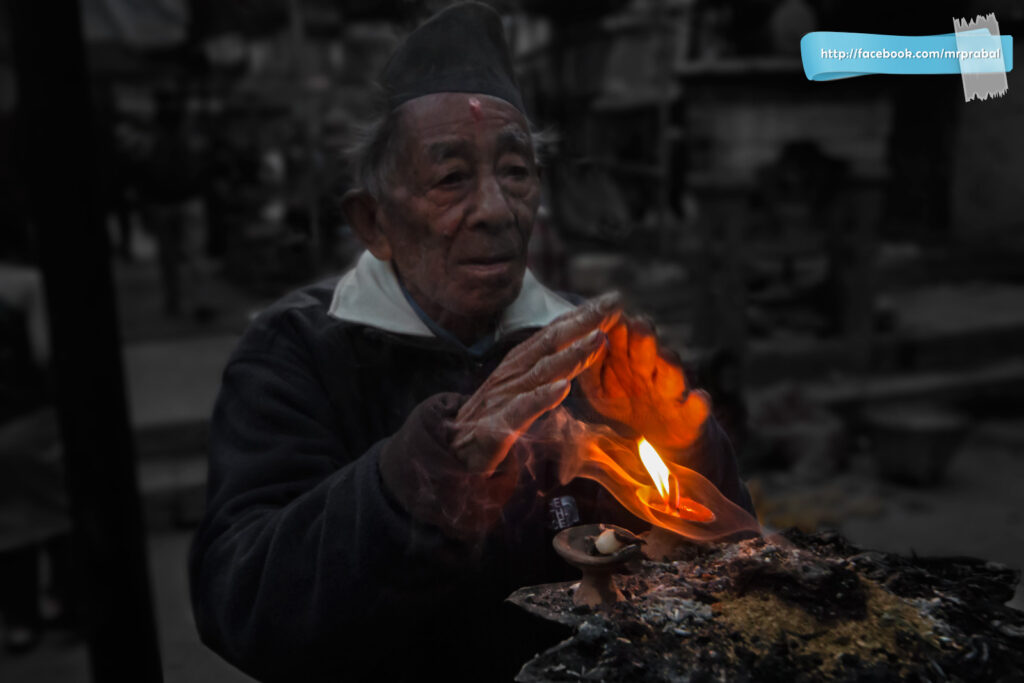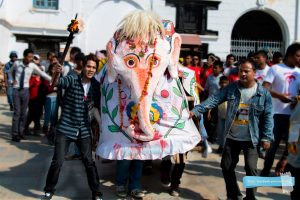One of the most ancient Newar tribes, which has made itself famous by a deep, varied, and voluminous contribution to the cultural heritage of man is the enriched culture-civilized Newer tribe of Nepal. Very obscure in origin, now processing a peculiar culture mixed with many tribal crudities, Newar tribes constitute a most complicated problem.
The Newars form the oldest living group not only in Nepal but in the whole of India. Their civilization goes back to a period older than Mohenjodaro. Their contribution to the particular variety of Asian art and architecture popularly known as Indo-Tibetan is very profound. They gave Nepal a name and fame without which that mountainous country would have them unknown. No wonder, therefore, that such a tribe has attracted the attention of historians and Indologists.

The Newars of Kathmandu
The Newars have been living in the valley of Kathmandu for centuries; nobody knows when they first settled down. If the Mahabharat and the other Sanskrit works were to be relied on it can proved that the reference therein about Nepal implied a reference to Kathmandu, the presence of the Newars; in the valley even in that period cannot be dodged.
From the time of the Mahabharat to the time of the Lichavis whose entry into this mountain principality opened a new vista for historians, the Newars seem to have been known by a different name. This only can be explained by the absence of any mention of these people in the books and anecdotes of that time. It is also very difficult to surmise how this word came into use.
Even after the Lichavis there is nothing to shed light on this point. Nepal gets its name from Naimeni according to legends, but if its antiquity were to be established as early as Mahabharat, Naimeni, or whatever the name of the name giver, cannot belong to the third century. Some historians erred in attributing the name, Nepal, to a king named Nimishi who flourished in the third century. What seems to be nearer to the fact is that this king created the word Newar by a dexterous combination of his name along with Nepal. Nepal could become Newer after some time by a process by which similar other words undergo a change; Nepal, Nepara, Newara.
The Origins of Newar
It is, therefore, entirely absurd to think that the Newars, are the same people as the Nairs of Malabar or that they were immigrants from North-Western India. There is still a legend in Nepal that the Newars came from the plains. These legends, however, are not entirely false, but they seem to have misconstrued certain important facts.
The Newars did not come from the plains but certain families from the plains, such as the Lichavis and Mallas of Pawapuri, have been absorbed into the Newar tribe and very likely legends speak of these families when they link the plains with the Newars of Kathmandu. And Nepalese culture was such that assimilated all other cultures and tribes. These are matters, however, to be decided by historians.

It should be noted that the Newari culture assimilated settlers from outside as late as the thirteenth century. In this particular century alone, certain immigrant amities from Mithila and Bengal were absorbed in Kathmandu. The Devabhajus, who are most probably from Bengal and who are responsible for the revival of Sanatan Hindu religion in Nepal in the reign of the Mallas, have lost their Bengali character and have been absorbed with the Newars in all aspects of life.
They have been, however, able to preserve their caste individuality by rigid isolation in matrimonial affairs. But whereas these Devabhajus were completely absorbed and have become part and parcel of the Newari communal life, by assenting to the priestly function of the Shiva section of the Newars. They have married relatives outside and are still regarded as Mithils, but Devabhajus are from Bengal no Newar believes this shows how closely untitled till this date.




